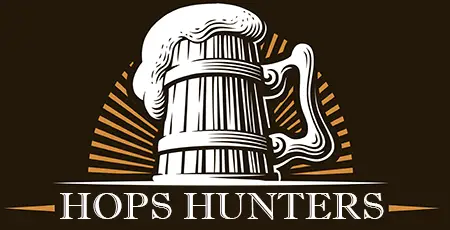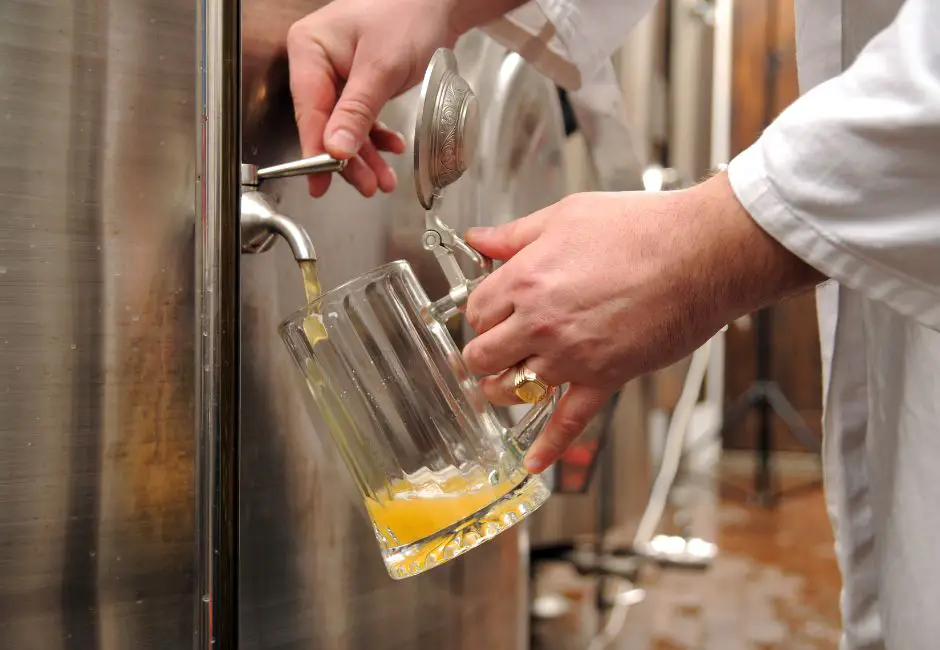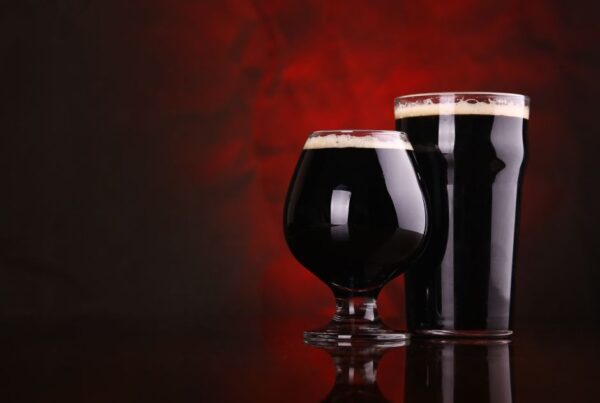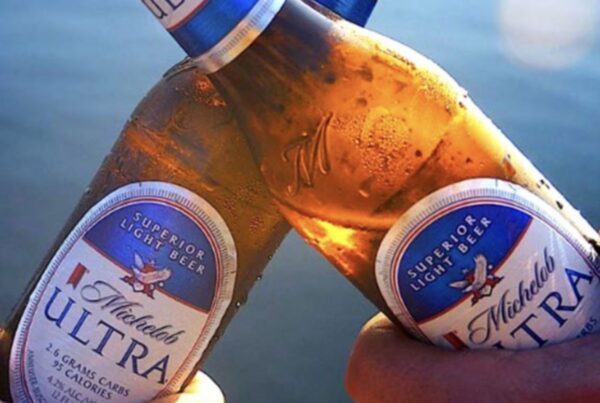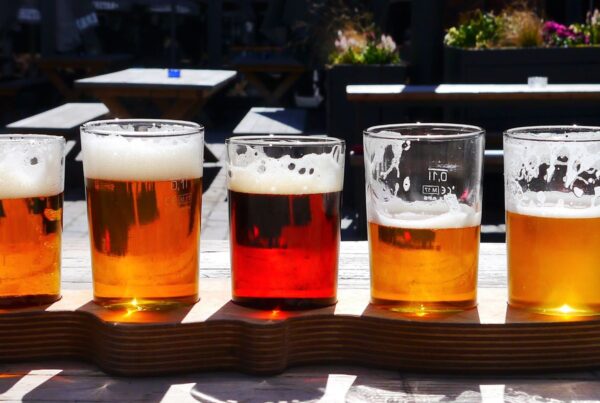Brewspeak: Essential Beer Terms & Vocabulary
Not everyone knows their malt from their hops—or their ABV from their IBU. So if you’re tired of just nodding along at the pub while your beer-savvy friends regale you with tales of wort and mouthfeel, worry not! Your crash course in essential beer terminology is here.
Think of this as a very basic introduction to the brewing lexicon. Soon, you won’t be a beer enthusiast, you’ll be a certified beer aficionado, dropping knowledge bombs with the best of them.
So grab a pint (or a tulip, or a snifter, depending on your poison) and let’s get familiar with some of the most basic beer terms, jargon, and lingo:
Essential Beer Terminology
Malt
Malt is a crucial ingredient in beer, and it refers to grains that have been partially germinated and then dried in a process called malting. While barley is typically the go-to choice, other grains such as wheat and rye can also be used. The malting process converts the starches in the grain into fermentable sugars, which are then used by yeast to produce alcohol during the brewing process.
Hops
Hops are the flowers of the hop plant (Humulus lupulus) and are used in beer primarily for their bittering and flavoring properties. Hops are added to the boiling wort during the brewing process, which extracts their bittering compounds. Additionally, hops contribute to the aroma of the beer, with different hop varieties offering a range of aromas from citrusy and fruity to floral and spicy.
ABV
ABV stands for Alcohol By Volume and is a measure of the alcohol content in a beer. The ABV is expressed as a percentage, with most beers ranging from 4% to 10% ABV. Beers with a higher ABV tend to be stronger and have a more pronounced alcohol taste.
IBU
IBU stands for International Bitterness Units and is a measure of a beer’s bitterness. The IBU scale ranges from 0 to 100, with 0 being no bitterness and 100 being extremely bitter. Beers with a high IBU tend to be hoppy and bitter, while beers with a low IBU tend to be sweeter and maltier.
Wort
Wort is the liquid that is created during the early stages of the beer brewing process. It is made by steeping malted grains in hot water, which causes the starches in the grains to break down into fermentable sugars. Ultimately, the wort is the starting point for beer, providing the needed sugars for fermentation and the base for the beer’s flavor and aroma.
Styles
Beer comes in many different styles—each with its own unique flavor profile and brewing process. Some common beer styles include:
- IPA: Hop-forward and bitter beer style, popular among craft beer enthusiasts. Includes sub-styles like West Coast, New England, and Black IPA.
- Lager: Clean, crisp beer fermented and conditioned at low temperatures. The world’s most popular beer style, including sub-styles such as Pilsner, Helles, and Bock.
- Pale ale: Hoppy beer with a prominent hop flavor and aroma. Less bitter than IPA and can range from light and refreshing to bold and complex.
- Stout: Dark, roasty beer with chocolatey and/or coffee flavors. Often rich and full-bodied, including sub-styles such as Oatmeal Stout and Imperial Stout.
- Wheat beer: Beer brewed with wheat, giving it a lighter and often fruity flavor. Includes sub-styles like Hefeweizen, Witbier, and American Wheat.
- Brown ale: Malty beer with nutty, caramel flavor and hint of chocolate. Often easy-drinking and medium-bodied.
- Pilsner: Light, crisp beer known for its clear, golden color and effervescence; often served in tall, slender glasses.
- Porter: Dark beer similar to stout, with lower ABV and less intense roasted flavor. Can have a range of flavors, from chocolate and coffee to toffee and caramel.
Glassware
Believe it or not, the glass you drink from can affect the taste and aroma of what you’re drinking. Some of the most common beer glassware includes:
- Pint glass: A common, standard beer glass that is cylindrical and holds 16 ounces of liquid.
- Mug: A sturdy, heavy glass with a handle that is common in the U.S., and is also often used for German-style beers.
- Stein: A tall, heavy glass with a handle and a hinged lid. Pretty much always used for serving traditional German-style beers. (Unless there are no clean mugs or pint glasses.)
- Tulip glass: A glass with a curved shape that is designed to trap the aroma of the beer.
- Snifter: Traditionally used for brandy and cognac, this glass with a wide bowl and a narrow mouth is also used for serving very strong, aromatic beers.
Other Miscellaneous Beer & Brewing Terms
- Adjuncts: Ingredients used in beer brewing other than malt, such as corn or rice.
- Barrel-aged: Beer that has been aged in a wooden barrel, which imparts flavor and aroma to the beer.
- Bottle-conditioned: Beer that has undergone a second fermentation in the bottle, resulting in natural carbonation, and sometimes sediment.
- Dry hopping: Adding hops to beer after boiling, which contributes to a beer’s aroma without adding too much additional bitterness.
- Gravity: The specific gravity of a beer refers to the amount of dissolved sugars in the wort, which affects the beer’s alcohol content.
- Head: The layer of foam that forms on top of a poured beer. A good head can help to release the beer’s aroma and enhance the drinking experience.
- Lacing: Closely related to the head, this is the pattern of foam left on the glass after a beer is poured.
- Mouthfeel: The sensation of a beer in the mouth, including its body, texture, and carbonation.
Trub: The solid particles that settle at the bottom of the fermenter during the brewing process, which can include hops, proteins, and yeast.
